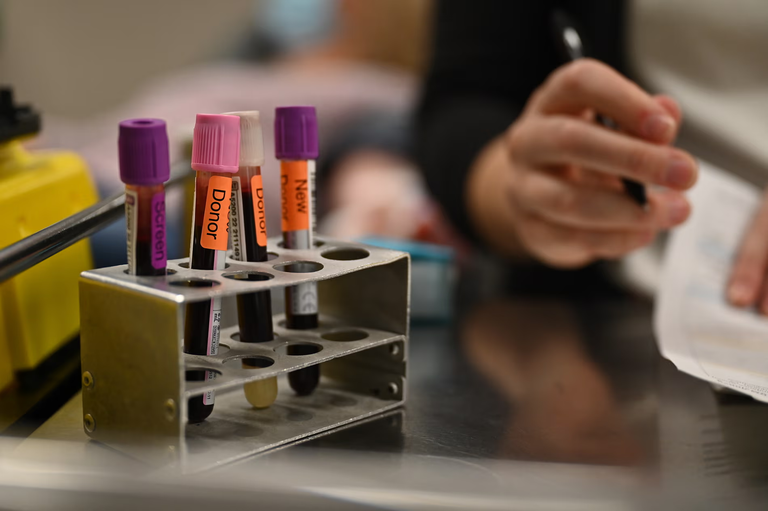Australia Modernizes Blood and Plasma Donation Rules, Ending Longstanding LGBTQ+ Restrictions

Australia is making a historic move to modernize its blood and plasma donation guidelines by removing restrictions that have long excluded sexually active gay and bisexual men, as well as some transgender individuals, from donating. These changes reflect significant progress in public health policy, aligning donation criteria with contemporary scientific understanding and a commitment to equality.
From Exclusion to Inclusion
For decades, men who have sex with men (MSM), including gay and bisexual men and trans women, were subject to strict deferral periods—originally 12 months, then reduced to three—before they could donate blood or plasma. These rules were initially introduced during the height of the HIV/AIDS epidemic to protect the safety of blood supplies, a concern that was valid at the time given the limitations in testing technology.
However, on July 14, 2025, Australia will implement new rules that largely eliminate waiting periods for plasma donations, even for those taking pre-exposure prophylaxis (PrEP)—a medication that drastically reduces the risk of HIV transmission. This shift marks the beginning of a "world-leading plasma pathway," according to Lifeblood, the national organization that manages blood and tissue donations.
Safety First—But Without Discrimination
The updated policy is backed by extensive research and safety modelling. Lifeblood and the Therapeutic Goods Administration (TGA) have reviewed the scientific evidence and concluded that these changes will not compromise the safety of the plasma supply. Since plasma for medical use is subject to multiple safety checks, including viral inactivation processes, the risk of transmitting infections is extremely low.
Lifeblood estimates the reforms could result in 24,000 new donors and an additional 95,000 plasma donations each year, helping to meet growing demand in hospitals across the country.
Gender-Neutral Screening on the Horizon
Beyond plasma, the TGA has approved a broader shift in blood donation policy. In 2026, Australia plans to roll out a gender-neutral screening system for blood and platelet donations. Rather than asking men if they have had sex with other men—a question many have found discriminatory—all donors will be asked the same set of risk-based questions, regardless of gender or sexual orientation.
Under this future system:
Individuals in monogamous relationships lasting six months or more will be eligible to donate without delay.
Donors with multiple or new sexual partners will still be eligible if they have not engaged in anal sex within the last three months.
This change is intended to shift the focus from identity to behavior, which many health experts say is a more accurate measure of donation safety.
Reactions from the Community
Dr. Jo Pink, Lifeblood’s Chief Medical Officer, described the changes as a long-overdue step toward equality. She acknowledged that while the original rules were essential during the HIV crisis, medical advancements and improved understanding of transmission risks make it possible to revise them without jeopardizing safety.
Community groups such as Health Equity Matters and Let Us Give have welcomed the changes. Dash Heath-Paynter, CEO of Health Equity Matters, emphasized that thousands of potentially life-saving donations could now be collected from previously excluded individuals.
Let Us Give, which has campaigned for this change since 2022, called the reform a major victory but also expressed concern that Australia’s rules remain more conservative than those in the UK, US, and Canada, where eligibility is often based on shorter periods of sexual monogamy and does not restrict people using PrEP.
Rodney Croome, a spokesperson for Let Us Give, noted that the requirement for either six months of monogamy or no anal sex for three months may confuse potential donors and urged policymakers to consider further revisions to match best-practice global standards.
The Path Forward
While implementation of the gender-neutral screening process is expected by 2026, Lifeblood officials say additional work is needed to finalize the questionnaire and systems that will support the change. Despite this, there is a strong sense of optimism within the LGBTQIA+ community and the broader medical field.
Dr. Pink expressed hope that the changes would inspire a new wave of donations:
“We know that many people in the LGBTQIA+ community are eager to contribute. I really hope we see a surge in donations once these rules take effect.”
https://www.reddit.com/r/lgbt/comments/1ler3b9/australia_modernizes_blood_and_plasma_donation/
This post has been shared on Reddit by @dkkfrodo through the HivePosh initiative.